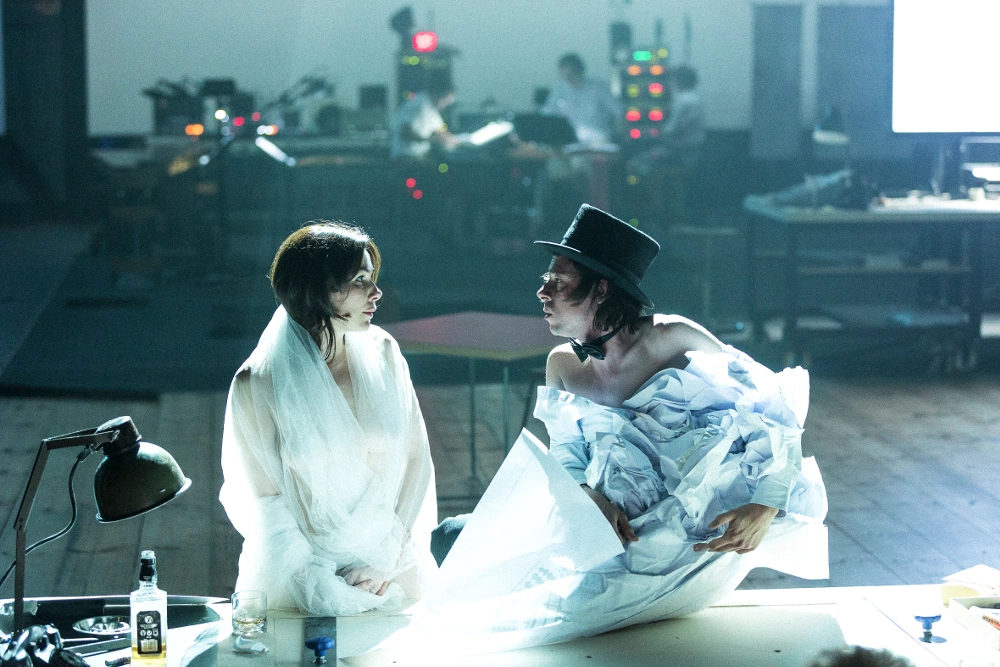The Fountainhead
10 – 17 November 2016
 Berthier 17e
Berthier 17e
Ivo van Hove has made a name for himself with his theatre versions of major film scripts by the likes of Cassavetes, Bergman or Duras. The Fountainhead could well have been one such script: Ayn Rand, the novel’s American writer adapted it for the cinema herself. On this occasion, van Hove chose the original work, published in 1943, to be his starting point. Van Hove read the novel’s 700 pages “almost in one go”, and then his mind was made up. From the onset, his attentions were drawn to an essential question, formulated and answered with near didactic clarity by Ayn Rand: “What is the essence of creation?”
According to Ayn Rand, creative freedom stemming from individual talent must not be hindered in any way. Accordingly, altruism, beneath its mask of apparent generosity, amounts to no more than a form of alienation at its most insidious level. Through it, the individual persuades him or herself to sacrifice their creative drive and superiority in the name of “collective interests”. By contrast, if the artist-creator holds their own and protects their uniqueness to the point of “selfishness”, he or she is then in a position to bring their work to fruition and, by the same token, give proof of their inherent worth to those around them. Any human being who rises up to meet the challenge of the talent which has been assigned to them becomes a fountainhead, and it is from this source alone that the elements of change necessary to generate real progress can accumulate over the ages. An allusion can be drawn with the skyscrapers which have, over time, contributed to the sublime beauty of the New York skyline.
Howard Roark is one such creative hero. While a student in architecture he is confronted with an important decision: either he must give up all his original ideas, or be expelled from the university. Roark does not hesitate for a moment. Prophet-like, and a martyr of self-truth, he is not one to make concessions. His art reflects his integrity: all or nothing, take it or leave it. Thus, the image that Ayn Rand gives us of the figure of Roark in a quarry hacking away at granite with a sledge-hammer is of no surprise to us. Peter Keating, his classmate, thinks he has made the opposite choice: he will do what is expected of him, give in to negotiation, fit into the system and profit from it, while serving collective interests at the same time. The truth, however, is that Keating is not confronted with the same choice as Roark - since he is void of any true creative might. But rather than admitting it, out of a mixture of ambition and vanity, he closes his eyes and does what it takes to usurp his way into positions which should never have been his...
In the course of her best-seller, Ayn Rand details the trials and tribulations of Roark, the man of stone who comes under fire from the attacks and resentment of the paper-thin figures around him: draughtsmen, would-be scribes of varying kinds, lawyers and other such parasites. But Ivo van Hove wants a fair fight for all parties. Rather than condemning Keating from the moment he sets foot on stage, he opts to “re-evaluate” his position. Throughout the demonstration that the novelist has constructed, Ivo van Hove, the man of theatre that he is, also sets down questions of his own, and which shake up the world of his own certainties to explosive effect: “should art accept to take part in everyday life? Should the artist remain isolated? How can one survive by producing art within the system?” First performed in June 2014, his answer, as theatre director, took the Avignon Festival by storm shortly after.



